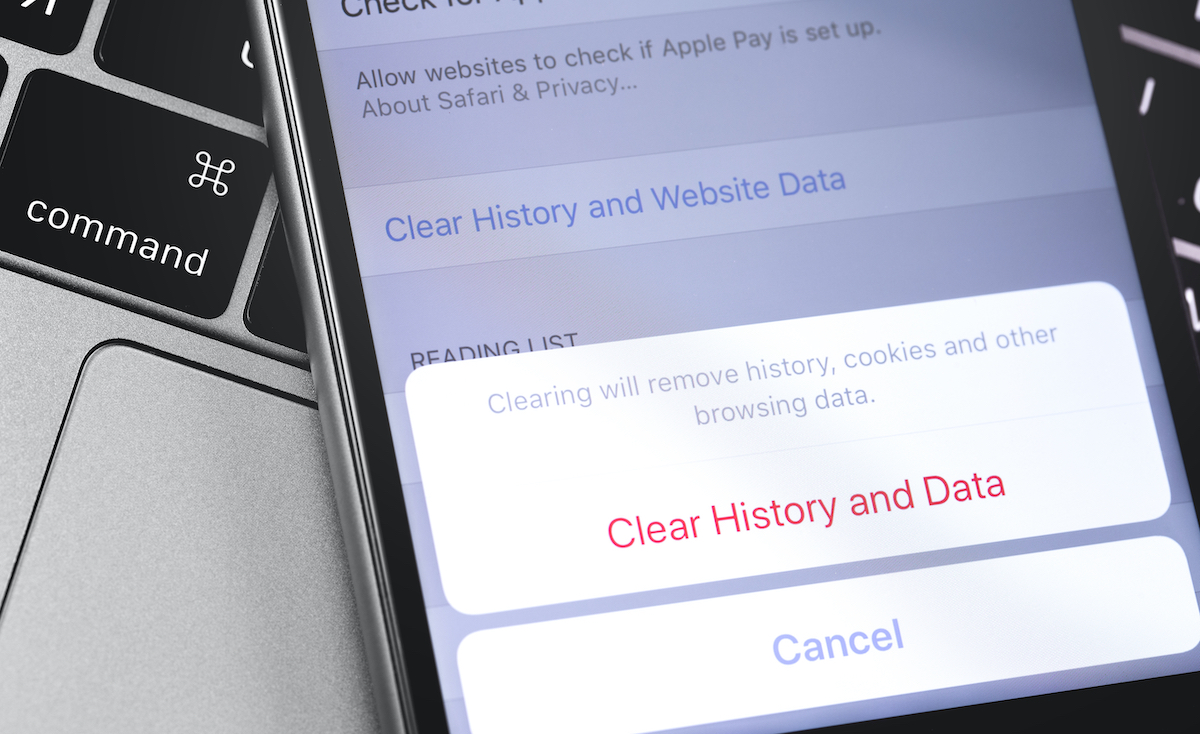Branding for The Silent Generation, Baby Boomers, Generation X, Millennials, and Generation Z.
Everybody knows one of the most important parts of marketing is identifying your target audience. Learning how to tailor your marketing strategy to appeal to the multiple generations currently living in the U.S. will help you build and evolve your brand’s unique voice in a way so that it seems like you’re directly speaking to the people who are most likely to buy your product or service. We’ve broken down the major age groups that currently have buying power in today’s economy, so you can get an idea of how to adapt your marketing efforts to be more appealing to each respective audience.
The Silent Generation (1925–1944)
Born during a tumultuous period in American history, The Silent Generation grew up watching their parents and older siblings fight in wars in faraway lands. Unlike their G.I. elders, they weren’t as concerned with upsetting the status quo but instead wanted to find a way to make “the system” work for them. The Silents preferred to keep their hands clean and their noses to the grind. During McCarthyism, they mainly kept to themselves and steered clear of the public hysteria. It was because of this that Time magazine officially dubbed them with “The Silent” label in a popular 1951 essay.
Culture & History
With the American economy booming once The Silent came of working age, people were looking for security and stability in their careers. Men took up sought-after roles in large corporations that were seeing rapid growth and success and they usually pledged their loyalty to those companies for life. Women stayed home to raise children or took on jobs that were considered appropriate for pre-feminism gender roles of the time, like teachers, secretaries, and nurses.
Impact
The desire for financial security cultivated over the years has lead them to constantly seek out organizations with good pensions and retirement plans. This explains why they are the healthiest and wealthiest generation of elders that has ever lived. They married for life and having children outside of traditional marriage was considered taboo. Generally, they tend to play by the rules, as this has historically worked well for them. It’s estimated that The Silent Generation makes up about 20 million adults in their 70s-80s.
Appeal
Retirees from this generation are some of the wealthiest and most free-spending retirees in history. So how do you get to their fat wallets?
The key to developing a lasting relationship with consumers from this age bracket is earning their trust. They value authenticity and loyalty, which means once you can truly prove your brand’s value to a Silent, then you’ve usually gained a new customer for life.
When it comes to mediums, The Silents are big fans of traditional print. They are avid newspaper readers and magazine subscribers. When distributing print materials for this audience use a large font size and develop your copy so that is clear-cut and easy to follow. Don’t beat around the bush — get to the point and prove your worth quickly or they’ll glance over your brand without a second thought.
Baby Boomers (1945–1964)
Culture & History
Ah yes, the famous (or infamous, depending on who you ask) Baby Boomers. Named after the massive influx of childbirths in the years following World War II, this generation is made up of roughly 75 million adults in their 50s and 60s. Interestingly enough, this age group can be split up into two smaller sub-groups: the altruistic rebels of the ’60s & ’70s and the career-oriented yuppies of the ’70s & ’80s. Both sub-groups grew up in the heyday of classic rock, hair metal, and power ballads. They helped foster an era of free love with a focus on loving and accepting yourself and those around you despite your differences. Boomers were one of the first age groups in American history to start accepting homosexuals on a large level, and although they were generally too busy or distracted for much local activism, they had a strong will to establish common values and decency for the good of humanity as a whole.
Impact
According to NPR, by the year 2020, Boomers will account for an estimated 70% of the country’s disposable income. If your brand hasn’t attempted to cash in on this huge age group’s inclination to self-indulge and buy on impulse then you’re letting a valuable opportunity go to waste. They have a tendency to buy on credit and are sometimes also referred to as the “me generation.” Now that they’re over the hill, they tend to value authority and structure, placing emphasis on hierarchies and “paying your dues.”
Appeal
With Boomers controlling so much of our economy’s consumer buying power, you’re probably wondering how to get your brand its own slice of the pie.
Boomers aren’t afraid to flex their disposable income and have redefined the way Americans think about retirement. While the Silents considered a happy retirement to be sitting in a rocking chair on the porch in the sun, Boomers consider being able to enjoy life after their children have left home as the ideal version of retirement. Once their little birds have left the nest, they tend to take up more hobbies and interests in their spare time.
Baby Boomers are best reached via a multitude of cross-channel branding efforts. While they are still somewhat influenced by traditional print media like their Silent parents, they’re also much more prone to engage with digital mediums and take part in online shopping and product research. When developing your marketing strategy to appeal to Boomers, make sure that you’re interacting with your audience at each point in the customer journey. Cross-platform branding and messaging should be consistent and have a clearly defined voice and tone that helps portray your brand in a positive way.
Generation X (1965–1979)
Culture & History
Sitting awkwardly between Millennials and Boomers is Generation X. Made up of about 65 million people in their mid-30s to late 40s, the population of Generation X is significantly lower than their Boomer parents and Millennial offspring. They tend to believe they are misunderstood by other age groups and don’t particularly feel like they belong to their own unique generation. This time period in American history saw a huge increase in technological development, which is why a lot of Gen Xers remember both a time with and without the widespread use of computers.
Impact
They’re wary of big government and big corporations because many of them saw these same entities fail their parents when they were younger. As a result, they’ve grown suspicious of organizations, even though they were raised by the career-conscious Boomers. With all of the career-driven and divorced parents of the time, the term “latch-key kids” was used to describe Gen Xers and the house keys kids used to wear on their person when they’d go home to empty houses after school. Once they’d grown and entered the workforce, their careers in the corporate world quickly taught them that they are disposable. Most are pretty self-reliant but can come across as self-absorbed. Having been raised by the conservative and budget-conscious Boomers, Gen Xers are, for the most part, very independent and individualistic people.
Appeal
Gen Xers don’t possess the same spending power that their Boomer parents do. As a result, they’re more cautious with how they spend their extra income.
They were raised during a time when our society began to favor more digital mediums and made massive advancements in technology in short periods of time. They greatly value tools and products that can make their lives easier and are always looking for ways to increase efficiency and save a few bucks.
Gen Xers know what they want, and they want it immediately. They’re pretty self-reliant and don’t have time for smoke and mirrors. If your target audience is primarily made-up of Gen Xers, forgo all the bells and whistles. Gen Xers want results — not buzz words. They value practicality above all else and have a short tolerance for misleading or ambiguous sales language. When they look for a product or service, they’re looking for tailored solutions to help them with their unique lifestyles and tasks, so entice them with honest deals and a proven track record of quality to help you seal the deal.
Millennials/Generation Y (1980–2000)
Culture & History
Millennials dominate the U.S. population with a whopping 100 million people between the ages of 19 and 39. Born at the turn of the millennium, this is the generation that never remembers a time without at least the most basic of computers. Unlike Generation X, most of them grew up in extremely supportive households to parents who were present and supportive in all aspects of their lives. They’ve been told since birth that they’re special and they expect the world to treat them as such. Unlike the other age groups we’ve mentioned, Millennials don’t prioritize their work lives as much as their older colleagues. They prefer a more casual environment and see the world as “always on”, meaning they expect immediate results and instant gratification from the products and brands they use.
Impact
With the oldest Millennials graduating from high school in 2000 and from college in 2004, most of their professional lives will be affected by The Great Recession of the early 2000s for the next few decades. These pale economic prospects are the driving force behind why so many Millennials that have graduated from college and are looking for work are unable to land a secure position in their field. By far the most overqualified and underpaid group of laborers in American history, many Millennials harbor disdain for the Boomers and Gen Xers that came before them and ruined the housing and job markets. With many of the challenges that Millennials face today stemming from years of neglect and malpractice at the hands of their older peers, the dissonance between older age groups and Millennials has never been higher.
Appeal
Not a day goes by that Millennials aren’t accused of killing off some type of industry or corporation. Despite what big businesses who line their pockets with the products millennials have deemed irrelevant would have you believe, they’re not the harbingers of doom that the sensationalized and corporate-controlled media makes them out to be.
Millennials love feeling connected. They like to feel like they’re always plugged in and they like having unlimited information only a finger tap away. They value authenticity and the more interaction you have with your Millennial audiences, the more prone they are to open up their purses and wallets to spend their hard-earned money on your products or services. If your brand has a solid online presence and is active on social media, then take care to deliver personalized messages that aren’t “cookie-cutter” in nature. If there’s anything Millennials hate more than hearing how awful they are from older generations, it’s feeling like they’re part of a blanketed marketing campaign that’s impersonal and cold.
Millennials care about social issues. According to a study from Deloitte, 75% of millennials think businesses should focus more on improving society. To capitalize on this collective soft-spot, consider ways to naturally make a positive correlation between your brand and bettering the world. If you need an example, Toms does a great job of showing the positive impact that each customer contributes to when they make a purchase.
Generation Z (2001–2015)
Culture & History
Still in the midst of forming their own cultural identity is Generation Z. In 2007 alone, a record number of births were reported in the US, which is a big reason as to why this young demographic, made up of mostly teens, tweens, and elementary aged children, is set to eventually become the largest age group in America. Sometimes called the “iGeneration”, most of these younglings had advanced technology in the palm of their hands before they ever started walking. With the increased popularity of tablets and similar devices, Gen Z babies lost interest in traditional toys like Barbie Dolls and action figures in favor of electronics at a much earlier age than ever before. Social media and technology are even more ingrained in them than they ever were for Millennials, but Gen Z isn’t as quick to publicly overshare as Millennials seem to be.
Impact
With minority populations seeing unprecedented growth and America’s melting pot becoming ever more diverse, Gen Z is more accepting of different cultures and ideas than ever before. Strangely enough, Generation Z doesn’t seem to be as perturbed as their Millennial predecessors when it comes to social issues. This perceived lackadaisical attitude may be due to the fact that they simply expect social progress, as that’s all they’ve seen since birth.
Like The Silent Generation that grew up seeing the effects of The Great Depression firsthand, Generation Z grew up seeing their parents and older siblings struggle during The Great Recession. Having been raised in a more uncertain and more divided world than ever before, Generation Z seems to steer away from rash behavior in favor of security and certainty. Studies on decreased underage drinking and lower teen pregnancy rates are perfect evidence of children from Generation Z preferring to engage in less risky activities than previous generations.
Appeal
With web-based entertainment and the continued development of computers and “smart” technology, the children of Gen Z are continuing to insert themselves into the consumer market at an increasingly younger age.
By far the most interconnected and tech-savvy generation, make sure your strategy includes multiple touch points and various rich media formats (video, photography, graphics, etc.). Generation Z gets bored easily and moves on to the next thing quickly, so get to the point. They make fast decisions and are heavy mobile users — so optimize your messaging and budget accordingly.
If you’re looking to tap into the Gen Z consumer marketing share, then make sure you’re conversing with your audience where they hang out the most — on social media. Hit the platforms they frequent the most often, like Snapchat and Instagram, and don’t ever make them feel like your pigeon-holing them into a group or assigning them a label. Focus on customer experience and clearly outlining how your brand directly helps them.
When it comes to analyzing the various generations in the United States, we’ve only barely scratched the surface. The factors that shape the attitudes, ideals, and tenements of each generation are as numerous as they are complicated. Learning as much as you can about each group can go a long way in helping you develop and fine-tune your marketing strategy so that your messaging resonates more soundly with its intended audience.



